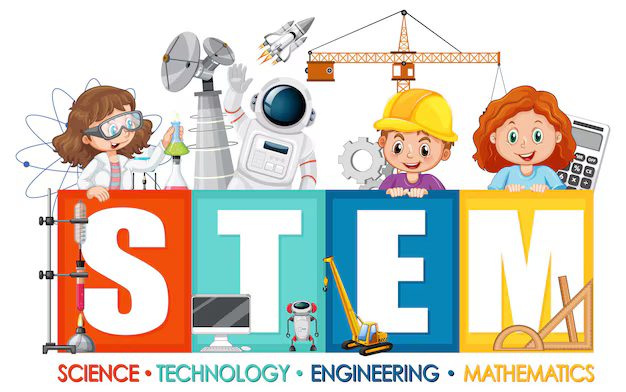Igniting Curiosity: The Power of STEM Learning in Primary and Secondary Schools
By Amani Ghachocha,
1 month ago Like ReadIgniting Curiosity: The Power of STEM Learning in Primary and Secondary Schools
In a world driven by innovation, STEM education—Science, Technology, Engineering, and Mathematics—has become much more than a collection of subjects. It’s a mindset, a way of exploring the world through curiosity, creativity, and critical thinking. For today’s students, especially those in primary and secondary school, STEM learning opens the door to endless possibilities.
Why Start Early?
Young minds are naturally curious. They love to ask why things happen, how they work, and what might happen if they try something new. STEM taps directly into this curiosity. By introducing STEM concepts early, teachers can help students see learning as an exciting process of discovery rather than memorization.
In primary school, STEM learning doesn’t need to look like advanced robotics or complex equations. It can begin with simple experiments, like building bridges from straws or exploring how shadows change during the day. These playful experiences lay the foundation for problem-solving and resilience—skills that extend far beyond the classroom.
From Curiosity to Creativity
As students move into secondary school, STEM becomes a bridge between abstract thinking and real-world application. Teenagers can design apps, code simple games, explore renewable energy, or investigate local environmental issues. These projects connect learning to life, showing students how their ideas can make a tangible difference.
Importantly, STEM encourages creativity and collaboration. Students learn that innovation doesn’t happen in isolation—it thrives when people share ideas, test, fail, and try again. This collaborative spirit mirrors the real-world teamwork found in modern industries.
Building Future-Ready Skills
STEM learning equips students with the 21st-century skills they’ll need no matter what career path they choose:
-
Critical thinking: Learning to question and analyze information.
-
Problem-solving: Tackling challenges methodically and creatively.
-
Digital literacy: Navigating and creating technology responsibly.
-
Adaptability: Thriving in a world of constant change.
Even for students who don’t pursue STEM careers, these abilities are invaluable in an increasingly complex and connected world.
Breaking Down Barriers
One of the most inspiring aspects of STEM education is its potential to promote inclusivity and diversity. When schools create engaging, hands-on learning environments, students of all backgrounds—and especially girls—see themselves as capable scientists, engineers, and innovators. Representation and encouragement matter: when students believe they belong in STEM, they’re more likely to explore and excel.
The Role of Teachers and Schools
Effective STEM learning doesn’t rely solely on high-tech labs or expensive resources. What matters most is a culture of inquiry. Teachers who nurture curiosity, allow mistakes, and celebrate perseverance create classrooms where innovation thrives. Partnerships with local businesses, universities, and community organizations can further enrich this learning, connecting students to mentors and real-world experiences.
A Future Built on Imagination
STEM learning isn’t about producing more scientists—it’s about empowering young people to think differently, to see challenges as opportunities, and to imagine a better future. Whether they become engineers, artists, doctors, or entrepreneurs, students who grow up with a STEM mindset carry with them the courage to explore, question, and create.
As we look toward the future, one thing is clear: STEM is not just the study of how the world works—it’s the art of shaping what comes next.
Is your school not in ScholarDream?
Discover ways you can simplify your school operations using the power of modern technology automation.
Create School Account